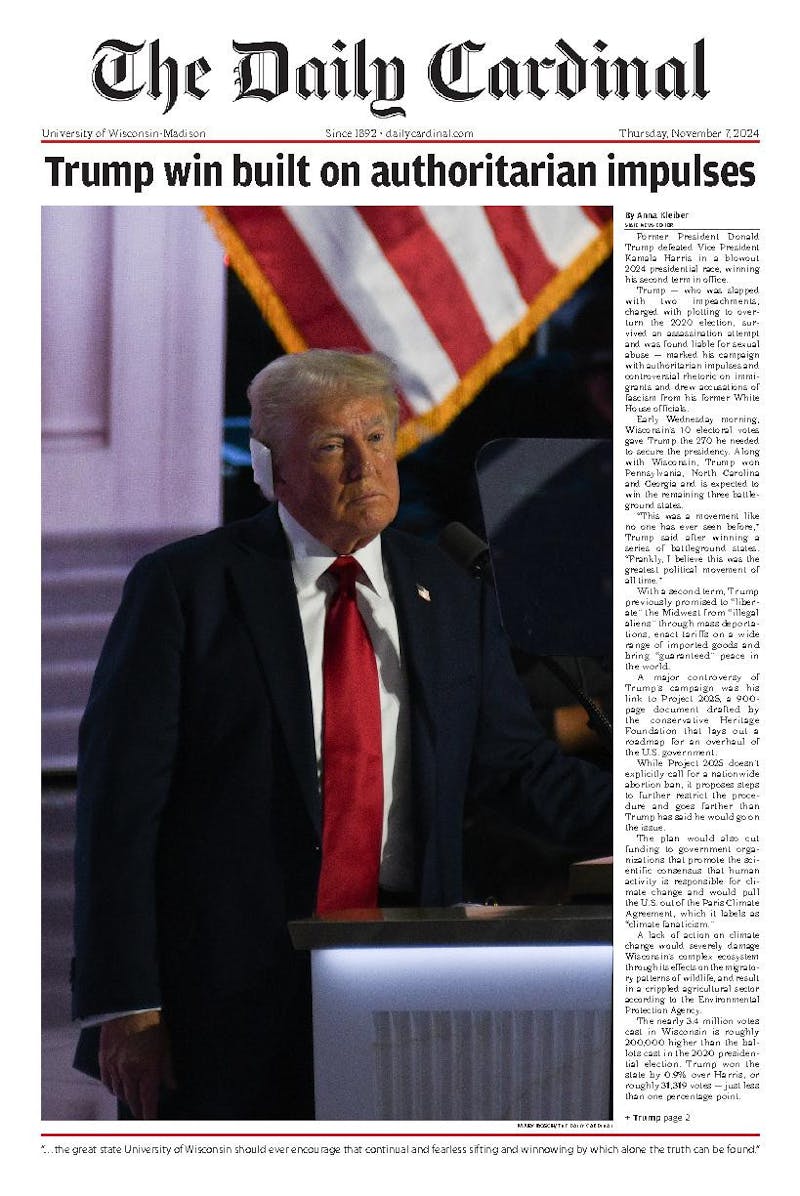Although 2003's \Finding Nemo"" grossed over $300 million dollars, the last 12 months have been trying for the Walt Disney Company. CEO Michael Eisner has become the most vilified person in Hollywood, shouldering the burden of live action failures such as ""The Alamo"" and the controversy of practically closing the hand-drawn animation studios the company was founded upon.
If Disney's worries were limited to the performance of its films, things wouldn't be nearly as bad as they are. The refusal to distribute ""Fahrenheit 9/11"" left the company on shaky terms with Miramax pictures, which it acquired in the 1990s. Although for the moment in appears that Disney will stay the parent of the independent film company, the event has augmented an already unsteady partnership. Then there's the questions raised against Eisner and other Disney board members over the rationale of firing former Disney president Michael Ovitz, who served just 14 months and received a hefty severance package of $140 million from the company. Other managerial decisions are being highlighted by Roy E. Disney, Walt's nephew, who has co-founded the ""SaveDisney.com"" Web site that aims to put the company back on the right track. And if all that weren't enough, the last year has also seen rumblings about a strike by Disney's theme park workers, and it looks as if the next few weeks may bring about the first Disney work stoppage since the 1980s.
With ""The Incredibles'"" $70 million dollar haul this past weekend, it may appear that Disney can breathe a little easier, if just for a few days. But in actuality the success of ""The Incredibles"" focuses more attention on the fact that both Disney and Pixar are seeking different partners in what has been an exclusive relationship thus far. Disney will distribute one final Pixar film next year before their contract expires, and it appears that further negotiations are questionable at best. Pixar holds all the cards in the relationship at this point. The company seems invincible, as all of its pictures have become box office hits (the average picture has earned $239 million domestically), and they've also shown that they can remain competitive against DreamWorks, which released ""Shrek 2"" on video last week as a counter marketing strategy. Pixar produces the actual animation on their own, and could easily find another studio that would drop everything to distribute the films of the company who made ""Toy Story"" and ""Finding Nemo."" Disney, on the other hand, desperately needs anything that gives it an ounce of credibility, not to mention profits.
So what is Disney to do? Well, the board of directors has already taken the first necessary step, and that's beginning the search for a replacement for Eisner. To his credit, Eisner did revitalize Disney. When he came on in the '80s, Disney was, like now, largely in trouble. After Walt Disney's death in 1966, the '70s saw his company drastically cut back on films in favor of concentrating on theme parks and merchandising. By the 1980s, animated feature films in general had been abandoned, except for occasional movies like ""The Fox and the Hound."" When Eisner came on, he revitalized the animation sector of Disney, with ""Who Framed Roger Rabbit?"" serving as the vanguard of a new age in animation that resulted in other modern classics such as ""Beauty and the Beast"" and ""The Lion King."" But Eisner's time is done. This is exemplified by the fact he has all but shut down the hand drawn animation studio that saved Disney in the '80s and '90s. This is an especially poor decision when you take into account that Disney has no real internal computer animation department. True, next summer's ""Chicken Little"" will be entirely computer animated, but it will be especially hard to compete with both a post-Disney Pixar and a DreamWorks still riding high off of the ""Shrek"" franchise. Even if hand-drawn animation is a thing of the past (which would be a tragedy), Disney needs to establish itself as innovator of computer animation, rather than hiring other companies to do it for them. Eisner doesn't seem to realize this, as he's become too preoccupied with maintaining the conglomerate nightmare the company has become. Internal animation created Disney, and saved it in the 1980s. There is no reason that it cannot do the same today.
Contact Dan at ddmarfield@wisc.edu





